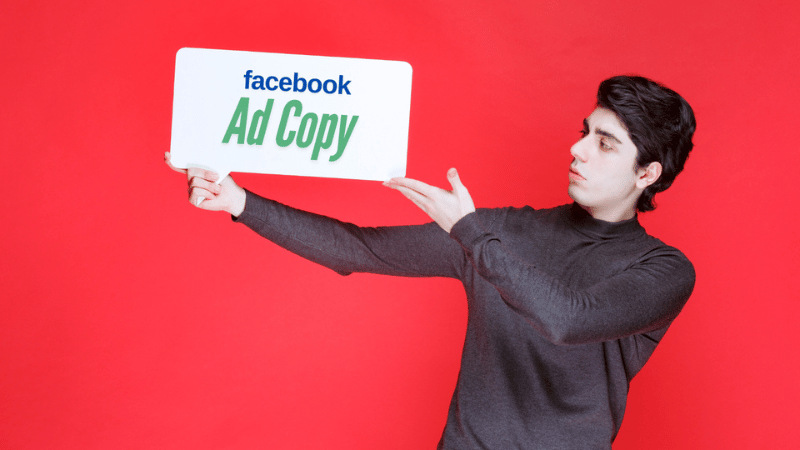Copywriting for Facebook Ads is not just about writing a few catchy captions or headlines; it is the determining factor in whether people stop to read, click, or scroll past your post as if they never saw it. Regardless of how much money you spend on ads, if your “Copywriting for Facebook Ads” is flawed, your conversion rate will plummet disastrously. Many marketers believe that beautiful visuals and precise targeting are enough, but in reality, content is the soul of the campaign. In this article, let’s dissect the 7 most common mistakes that result in copy that fails to convert and ineffective ads, so you know exactly where you are stumbling and can correct them immediately before burning any more money.
Why is copywriting the soul of Facebook advertising?

Facebook is a platform where users scroll quickly, glance briefly, and forget fast. Amidst hundreds of posts, only ads with genuinely emotionally “touching” Copywriting for Facebook Ads make viewers stop for a few seconds. It is the copy—not the image or targeting—that controls the reader’s behavior and emotion, leading them from curiosity → rightarrow → interest → rightarrow → action. In other words, Copywriting is the soul, while other elements are merely the framework.
How Copywriting Affects User Behavior
Humans don’t buy products; they buy the emotions and beliefs that the product offers. A powerful line of copy can make the viewer feel, “This is exactly what I need.” When a piece of Copywriting for Facebook Ads is skillfully written, it not only tells a good story but also embeds elements of behavioral psychology, such as scarcity, the Fear of Missing Out (FOMO), or the desire for belonging. These factors cause readers to react automatically, clicking the “Learn More” or “Shop Now” button without much thought.
A good copywriter understands the user’s emotional journey from skepticism to interest, trust, and ultimately, the decision to act. They know how to use language to guide each step, not forcing, but making the customer willingly “fall into an emotional trap” in a positive direction.
When the content is good but fails to close the customer

Many people write quite good Facebook Ads content, it reads smoothly, the visuals are nice, the insights are correct, etc, yet the conversion rate remains low. The reason is that the copy lacks a persuasive strategy. In other words, the post might entertain the reader but lacks sufficient motivation for them to act. This happens when the copy is not compelling enough, the real benefit is unclear, or the Call To Action (CTA) is too weak.
Another mistake is that the copy is inconsistent with the ad objective: if the goal is to close sales, the content leans toward storytelling. If the goal is brand awareness, the copy is written in an aggressive sales style. When the copy and objective do not align, the reader feels a “vibe mismatch” and scrolls past.
Finally, a lack of A/B testing also causes much content to be overlooked. No matter how good the copy is, if you don’t test multiple versions to see which phrase is most effective, you will never know the real conversion-driving keywords.
Top 7 Facebook Ads Copywriting mistakes that waste your money
Writing Copywriting for Facebook Ads is not just about writing a few trending captions or adding some emojis for visual appeal. A truly effective piece of copy must hit the right emotion, address the right need, and lead the reader to action. However, even experienced marketers can make mistakes that lead to costly campaigns with no results. Here are the 7 most common mistakes in Copywriting for Facebook Ads and solutions to help you optimize conversion performance sustainably.

Failing to understand the target audience
Mistake: Writing content that is too generic, not based on specific data and research about the needs, behavior, and pain points of the target customer. When you don’t understand who they are, the copy becomes bland and unpersuasive.
Solution: Before writing, spend time defining the buyer persona. Learn the language they use, the problems they are facing, and what they truly desire. Write in the way they speak, so they feel that you “understand them better than anyone else.”
Focusing on features instead of benefits
Mistake: Only listing product specifications without clarifying the actual benefits provided to the customer. This makes the content dry and disconnected from the reader’s emotions.
Solution: Every feature should be translated into a specific benefit. For example, instead of writing, “Sunscreen SPF 50+,” write, “Protect your skin from harsh sun all day without feeling greasy.” Always remember: customers don’t buy features; they buy the results the product delivers.
Weak and directionless Call-to-Action (CTA)
Mistake: Using vague CTAs like “Click here” or “Send now” leaves the reader unsure of what they will receive.
Solution: Write specific CTAs that provide clear benefits and drive action. For example: “Download the free effective advertising guide ebook” or “Sign up now to get a 30% discount today.” A strong CTA is the closing punch that significantly boosts the conversion rate.
Writing bland, emotionally detached content
Mistake: The copy is too safe, lacks a story, and fails to create an emotional connection. Readers scroll past without a reason to stop.
Solution: Turn storytelling into a part of your writing strategy. Start with a real story, a relatable situation, or a common pain point. Authentic storytelling makes the brand trustworthy and creates empathy, which every successful campaign has.
Using too much jargon and clichéd phrases
Mistake: Overusing industry jargon or trendy phrases like “breakthrough,” “comprehensive optimization,” or “multi-functional platform” confuses and bores the reader.
Solution: Keep everything simple, clear, and authentic. Write as if you are having a conversation with the customer, not giving a presentation. The easier the language is to understand, the easier the message is to reach the reader’s psychology.
Spelling and grammar errors that damage brand credibility
Mistake: Even a small typo can cause readers to doubt the brand’s professionalism.
Solution: Always thoroughly check before posting. Read it back multiple times, or read aloud to detect awkward phrasing or errors. If possible, ask someone else to review it. A polished piece of copy shows respect for both the brand and the customer.
Talking too much about the product, forgetting the customer
Mistake: The copy focuses on self-praising the product instead of showing the customer what they will gain from using it.
Solution: Shift the focus from the brand to the customer. Ask the questions: “What problem does this solve for them?” “How will they feel after using the product?” Instead of writing, “We offer the best service,” write, “You will save 3 hours every day thanks to our optimized process.”
Effective Copywriting for Facebook Ads is not about how eloquent and beautiful your writing is, but about how deeply you understand your customer. By avoiding the 7 mistakes above, you will see a clear difference in every campaign: reduced Facebook ad costs, increased engagement, and most importantly, customers who truly trust and take action.
Frequently Asked Questions
There is no guaranteed formula for conversion, as copywriting is a combination of psychology, context, and user insight. However, classic frameworks like AIDA (Attention – Interest – Desire – Action), PAS (Problem – Agitate – Solve), or FAB (Feature – Advantage – Benefit) remain effective when applied correctly. More importantly, you must A/B test and optimize continuously – one headline may need 3–5 different versions to find the one that truly touches the customer’s emotions.
It is extremely important. Although video dominates Facebook Ads, every line of text is still the framework that directs the content. From the video script, the caption, to the CTA line—it is all copywriting. An impressive video can attract viewers, but it is the words that make them act. Copywriting has not disappeared; it has merely changed its form: from long-form writing to concise language, focusing on the hook and value proposition. In every format, copy remains the backbone of the brand’s message.